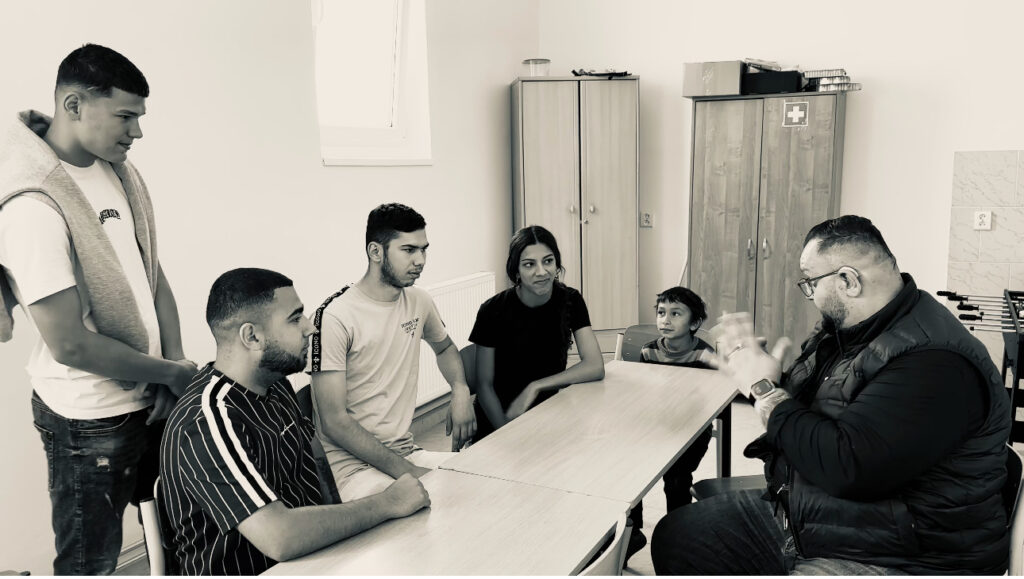Raising a deaf child requires a specific approach that takes into account their communication needs, social development and overall inclusion in society. Parents and educators often face questions about how to ensure optimal conditions for the child’s linguistic and cognitive development, how to lead them to independence and how to enable them to fully integrate into the wider community.
Language development and communication
One of the most important aspects of raising a deaf child is the choice of a communication system. The most common approaches include:
- Slovak Sign Language (SSL) – the natural language of the deaf, which supports the development of thinking and identity.
- Oral method (verbal expression + looking) – requires long-term training and does not always lead to effective communication.
- Bilingual approach (SSL + spoken language) – a combination of sign language and spoken/verbal expression in written form, considered the most effective model of education.
It is important that parents and the close environment of a deaf child learn sign language, thus enabling them fluent communication and reduce the risk of social isolation.
Social and emotional development
Deaf children may have limited access to informal learning (e.g. casual conversations in the family, television, radio), which can affect their understanding of the world and relationships. Therefore, it is important to:
- Create a stimulating environment where the child can communicate freely and express their emotions.
- Involve them in the deaf community so that they have the opportunity to socialize with peers with the same language experience.
- Support their self-confidence so that they do not feel excluded and are able to defend their rights.
Education and the child’s future
Educating deaf children requires an individualized approach and adaptation of teaching methods. The main factors for success include:
![]() Access to quality interpreters and special educators.
Access to quality interpreters and special educators.
![]() Use of visual methods and modern technologies in teaching.
Use of visual methods and modern technologies in teaching.
![]() Support for bilingual education (SPJ + spoken language).
Support for bilingual education (SPJ + spoken language).
A deaf child can be a full and successful member of society if we provide him with adequate tools for education, communication and self-expression. The key is to respect his needs, support his identity and create an inclusive environment in which he can fully develop his potential.
What is important?
- Take advantage of moments throughout the day
- Pay attention to the correct position of the body and face
- Do not forget the importance of eye contact
- Do not be afraid of strong non-verbal communication
- Make sure that your speech is clear
- Give the child enough time to react
- Repeat, repeat, repeat all important information
- Use a compensatory device throughout the day
- Warn the child about the sources of sound around him/her
- Do not forget about a quiet environment for communication without disturbing sounds
- Praise your child
- Be consistent
Get along from activities that are repeated every day: feeding, bathing, playing…. During these activities, comment on what you are doing with the child: with words and signs. Give the child information about what will happen, and also that an activity has ended, so that he can orient himself in the events. In these situations, the child learns to understand the meaning of things and the connections between them.
Any joint activity is suitable for developing communication. Something interesting is happening everywhere – be it a bus ride or a visit to the playground.
Correct body and face position
Remember that a small child is not at the same height as an adult. It is a good idea to move your face to the level of the child’s eyes and at the same time make sure that your face is sufficiently lit. This way, the child can see well not only your face, but also your mouth. Because if your baby can’t see your mouth, he can’t even look at what you’re saying.
Eye contact
In order for your baby to use his eyes to get important information, he needs to have good eye contact with you. Make eye contact with your baby as often as possible.
Touch him on different parts of his body and encourage him to look at you. Use even short moments, when your child looks at you spontaneously, respond immediately: smile, make a gesture, make a sign, say a word or show him a toy.
This way, you will achieve that the child will begin to understand that when he looks at you, something interesting will happen.
Strong nonverbal communication
Your child will understand you better if you use strong gestures and if your facial expressions are strong (but not exaggerated). This will also make it easier for you to attract his attention.
The clarity of your speech
It is advisable to speak calmly and clearly, but do not exaggerate the pronunciation, or even distort the position of the speakers in an attempt to emphasize the pronunciation. At the same time, it is not necessary to shout at the child. The ideal is a natural pace of speech with a clearer pronunciation, which is accompanied by signs of sign language.
When you talk about an object, don’t forget to show it to your child.
Simplify your speech but don’t reduce it to individual words.
Giving enough time to react
When playing or doing activities together, give your child enough time to react to your prompts. Adults often try to help their child, especially if they are unsure of the situation and are afraid of doing something wrong. (This situation can be when communicating with a child with a hearing impairment). They either answer for the child themselves or come up with a new prompt too soon. Remember, however, that the child needs enough time to evaluate the situation and react to it.
Repeating important information
It is important to repeat words and signs often so that the child has the opportunity to capture them and understand their meaning.
All-day use of a compensatory device
Also important is the all-day use of hearing aids or a cochlear implant, which provide the child with auditory training.
Notifying the child of sound sources
From the beginning, alert the child to the sounds that surround him (like the washing machine, the toilet flushing, the sounds the vacuum cleaner makes…)
A quiet environment for communication without disturbing sounds
In order for the child to begin to orient himself in the sounds that surround him, it is necessary for the home to be quiet and peaceful. Disturbing sounds (e.g. a radio or television playing) can make it difficult for the child to pick up the sound and also to determine what the sound is.
Praise
When your child succeeds in something, let him know clearly – with facial expressions, gestures, words and signs. There is no better motivation for further joint activity than praise.
Consistency
Be as consistent as possible in using the procedures that are important in communicating with your child (see above).
Source:www.frpsp.cz







